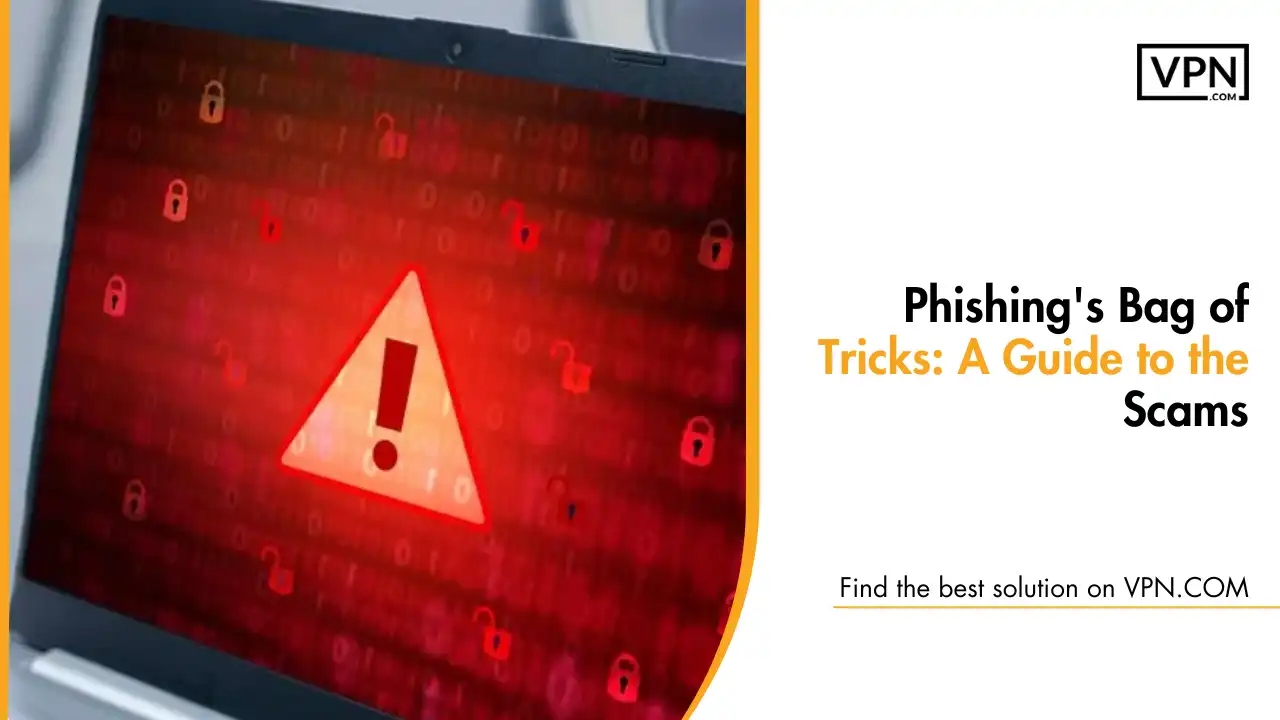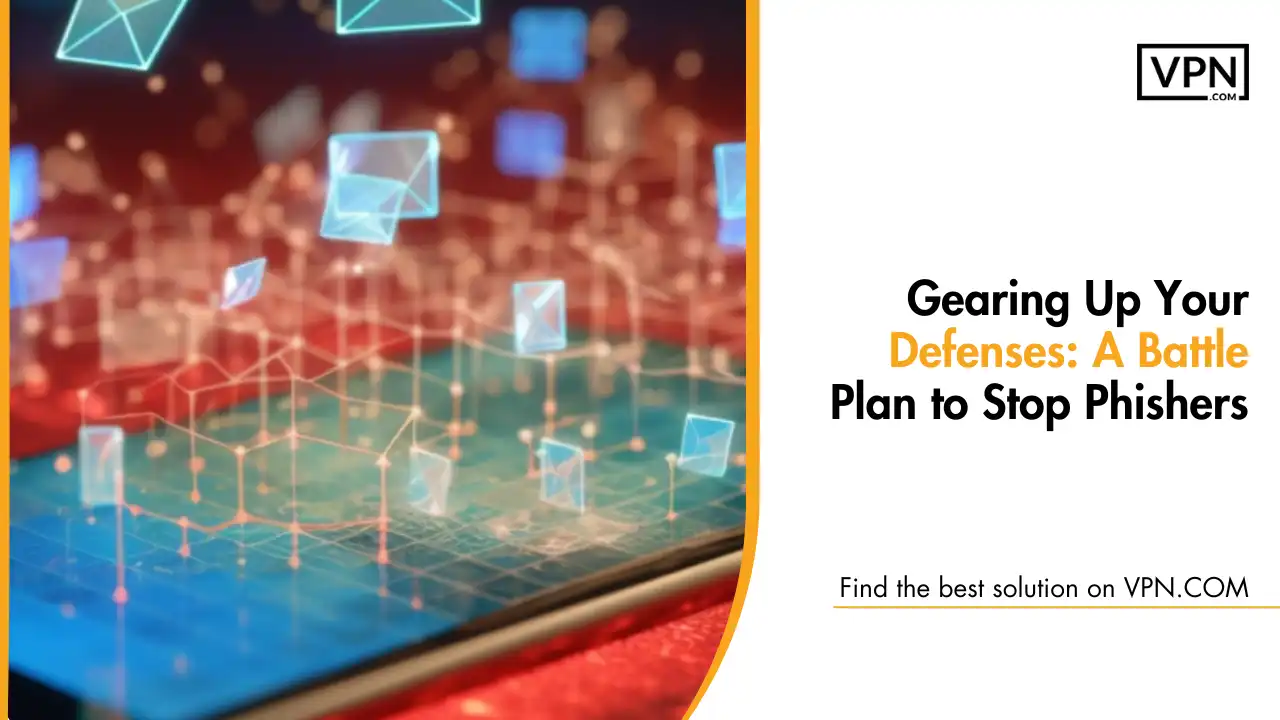Types Of Phishing Attacks And How To Protect Your Organization

In our constantly connected digital world, cybercriminals are always finding new ways to trick us. One of their most deceptive tactics is phishing – sneaky attempts to steal our personal information or gain unauthorized access to systems.
These phishing criminals are cunning and persistent, casting wide nets to lure as many victims as possible into their traps. As their schemes become more sophisticated, we need to stay one step ahead to protect our digital lives and organizational assets.
To fight this battle, we need to understand our deceptive opponents and the underhanded tactics they use. Let’s explore the different forms of phishing and expose their devious methods. By learning about these threats, we can better defend ourselves and avoid falling victim to their schemes.
Phishing is a serious concern, but by staying informed and vigilant, we can outsmart these criminals and keep our sensitive information safe. Staying one step ahead is crucial in the ongoing battle against cybercrime
Phishing’s Bag of Tricks: A Guide to the Scams

Phishing comes in many devious disguises, each one custom-built to bypass our defenses and fool even the savviest victims. Here’s the lowdown on phishing’s nastiest tricks:
Email Phishing Attack
Classic email phishing is still phishers’ bread and butter. These con artists craft fake emails posing as legitimate places like banks, stores, or even co-workers. They’ll go to great lengths to make their bait look real.
Some sneak in by spoofing the sender to make it seem the email is from a real place. Others use scare tactics or play urgency mind games to panic you into clicking. And nasty attachments or shady links are how they deliver their malware payload or redirect you to bogus sites.
Infamous Lures
- “CEO Fraud”: Crooks impersonating bosses to weasel money transfers or sensitive info from staff
- “Fake Invoice” racket: Tricking you into paying phony bills by posing as vendors
- Security alert imposters: Trying to steal logins by faking password reset requests
Vishing: When Con Artists Call Your Phoneline
With vishing, sneaky scammers literally call you up or leave sly voice messages to reel you in. They’ll spoof legit numbers to look like the real deal on caller ID. Pretending to be authority figures like tech support is another go-to scheme.
But often, these goons simply try riling you up with scare tactics and urgent demands. If you fall for the bait and do what they say, you could hand over sensitive info or get infected with malware.
Infamous Vishing Rackets
- Bogus “tech support”: Like someone from Microsoft or Apple is calling about your “virus” issues
- Tax crook calls: Fakers posing as the IRS threatening legal action if you don’t pay up pronto
- Emergency scams: Tugging at your heartstrings by claiming a loved one needs money fast
Smishing: When Texts Start Smelling Fishy
With our phones always buzzing and smishing, phishers can go wherever we go. These scams arrive via shady text messages designed to catch you off guard.
Classic tactics include dodgy links promising free stuff or important updates, which actually lead to malware traps or phishing sites. They’ll also try and trick you with urgent-sounding schemes appealing to your emotions or curiosity so you’ll tap before thinking.
Infamous Smishing Ploys
- Delivery scams with fake tracking links for packages that don’t exist
- Disguises mimicking bank alerts urging you to “update” your login info
- Exploiting hot topics and news events (COVID texts offering bogus vaccine help)
Angler Phishing: When You’re the Chosen Target
With angler or whaling phishing, it gets way more personal – and sinister. These creeps invest a ton of time researching and studying you or your organization. That way, they can customize their scams with convincing personal data and lures precisely tailored to you.
It’s a whole new level of deception. Imagine getting an email appearing to be from your boss or client, containing specifics only they would know. Who wouldn’t take the bait?
Infamous Examples
- C-suite whaling: Elaborate impersonations scamming executives out of wire transfers or intel
- Consumer data abuse: Hackers exploiting leaked personal info from breaches to craft hyper-real hooks
- Political whaling: Attacks targeting government and VIP communication channels
Pharming: When the Trail Leads to Shady Ground
Pharming is a nasty sidewinder that doesn’t even need you to click any links. With some technical trickery, these phishers can secretly reroute you from legit websites onto their own counterfeit versions. Even if you type the right address!
Once on the bogus copycat site, you’d never know the difference. It looks identical, so most people cheerfully hand over logins, financial details, or whatever info the phishers are angling for.
Infamous Pharming Rackets
- Highways to nowhere: Rerouting major sites like Facebook or Amazon to phishing copycats
- Financial detours: Faking bank websites to hoover up account credentials and data
- Network nano corruption: Infecting routers and internet networks with malware to redirect traffic
Spear Phishing: The Sharpest Weapons of All
If phishing had an elite special ops unit, it’d be spear phishers. These cybercriminal ninjas focus all their resources on individually crafting each ultra-convincing attack to have the maximum impact on specific high-value targets.
Armed with dossiers of your professional and personal info, spear phishers custom-build scarily believable lures. Maybe it’s an email that looks like it’s from your cousin asking for money? Or a text from your boss about an “urgent project?” No dirty trick or mind game is off the table.
Infamous Strikes
- Corporate infiltration: Going after employees with access to sensitive systems and data
- Supply chain skulduggery: Posing as legitimate partners to weasel their way inside
- Deep fakes: Using AI-generated video and audio of public figures to spread disinfo
Gearing Up Your Defenses: A Battle Plan to Stop Phishers

From the email rackets and voice cons to the texting scams and meticulous spear phishing strikes, these phishers sure are adaptable little parasites, eh?
They’ll probe relentlessly for any crack in our cyber armor, wiggling their way into our networks and lives. That’s why we’ve got to be equally versatile and vigilant in fighting back. A multi-layered defense mixing tech, training, policies and quick response is critical.
Arming Your Frontline: Employee Training 101
Your employees are the first defense against any phishing attack, so regular security training is mission-critical. Teach them to spot those shady sender addresses, urgent scare tactic language, and requests for passwords or financial data.
But also breed a culture of skepticism – encourage folks to verify anything looking even slightly fishy before clicking or responding. Run simulated phishing drills so they get practice spotting bogus bait. And make sure there’s an easy way to report suspected shenanigans.
Protect Yourself Online
While employee vigilance is huge, you’ve also gotta bring your A-game with cybersecurity tools and technologies. A multi-layered approach combining different protections exponentially boosts your defense:
- Email filters and anti-spam: Catch and quarantine phishing messages before they reach inboxes
- Web filtering: Block access to known bad sites and malware traps
- Multi-factor authentication: Add extra ID checkpoints beyond passwords
- Endpoint protection: Security apps sniffing out and eliminating malware on devices
Incident Response: Have a Cyber FireFighting Plan
No matter your precautions, some phishing scams will likely slip through eventually. That’s why you need an air-tight incident response strategy to rapidly contain any damage.
Firstly, ensure everyone knows how to immediately report potential incidents. Have a dedicated security team ready to leap into action investigating and sealing off breaches. Run regular simulation drills so your response stays finely tuned.
Clear security policies and procedures keep everyone aligned on best practices. And don’t forget your third-party vendors and partners – hold them to the same high standards.
FAQs
Why are these phishing scams so effective against even savvy folks and organizations?
Phishers exploit fundamental human psychology and emotions. Their social engineering baits tug at our curiosity, greed, fear, and trust. Constantly evolving tactics make it tough to stay ahead.
How can I spot a phish from a legitimate message?
Unusual phrasing, grammar errors, and odd email addresses are red flags. Ditto anything asking for private info or funds unprompted. When in doubt, verify independently before taking any action!
I think I fell for a phishing scam. Now what?
First, change any compromised passwords right away. Then alert your IT team so they can lock down access, investigate, and scan for malware. Quick action is crucial to containing the damage.
How do we protect ourselves from phishers going after third parties like vendors?
Carefully assess third-party cyber practices. Set security requirements in contracts. Monitor their access and activities. And provide phishing awareness training for their staff too.
How often should we run anti-phishing training for employees?
Regularly! Many experts advise making it an annual requirement at a minimum. But more frequent sessions (like quarterly) keep security top-of-mind and skills sharp.
What are the different forms of phishing? How do you identify phishing emails?
Phishing takes forms like fake emails, websites, or messages. Identify them by checking for urgency, misspellings, strange links or requests for sensitive information from untrusted sources.
The Bottom Line
From classic email trickery and voice impersonation scams to sneaky text lures and meticulously targeted spear phishing, each phishing form brings its own unique dangers. But by truly understanding the tactics, we can fortify our defenses.
Combining savvy digital security tools with frequent employee training nurtures an adaptable, vigilant cybersecurity culture. Having robust incident response and vendor management practices ensures you’re prepared for anything.
Ultimately, we must remain hyper-aware yet proactive in countering each new phishing gambit as it slithers out of the cyber shadows. It’s a perpetual battle – but one we dare not lose if we want to keep our digital worlds safe and secure.
Customer Reviews for NordVPN: In-Depth Review, Tests, and Stats

Connection issues with MLB.TV
May, 2 2023

Prompt customer service
May, 6 2023

I would highly recommend
December, 15 2023
